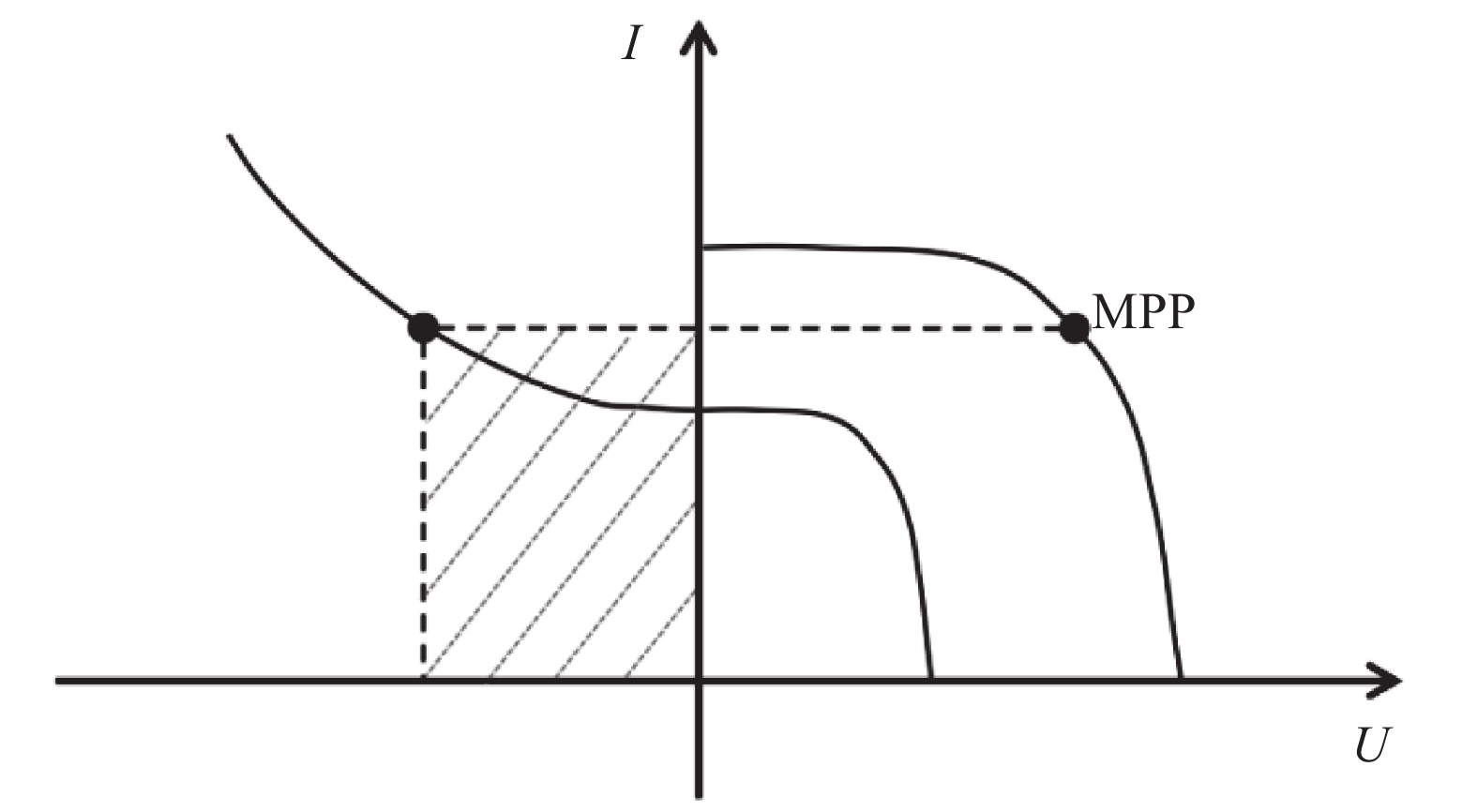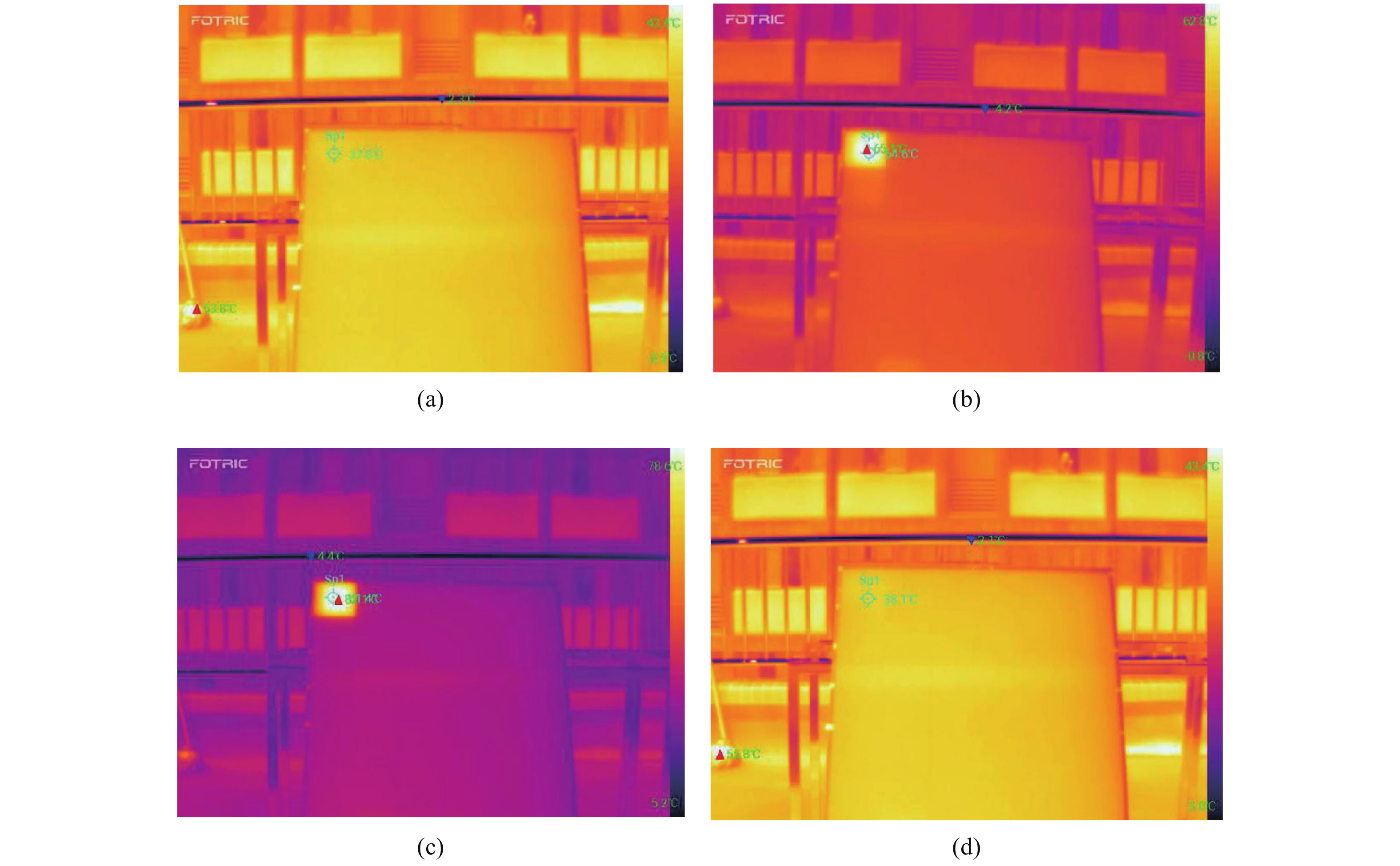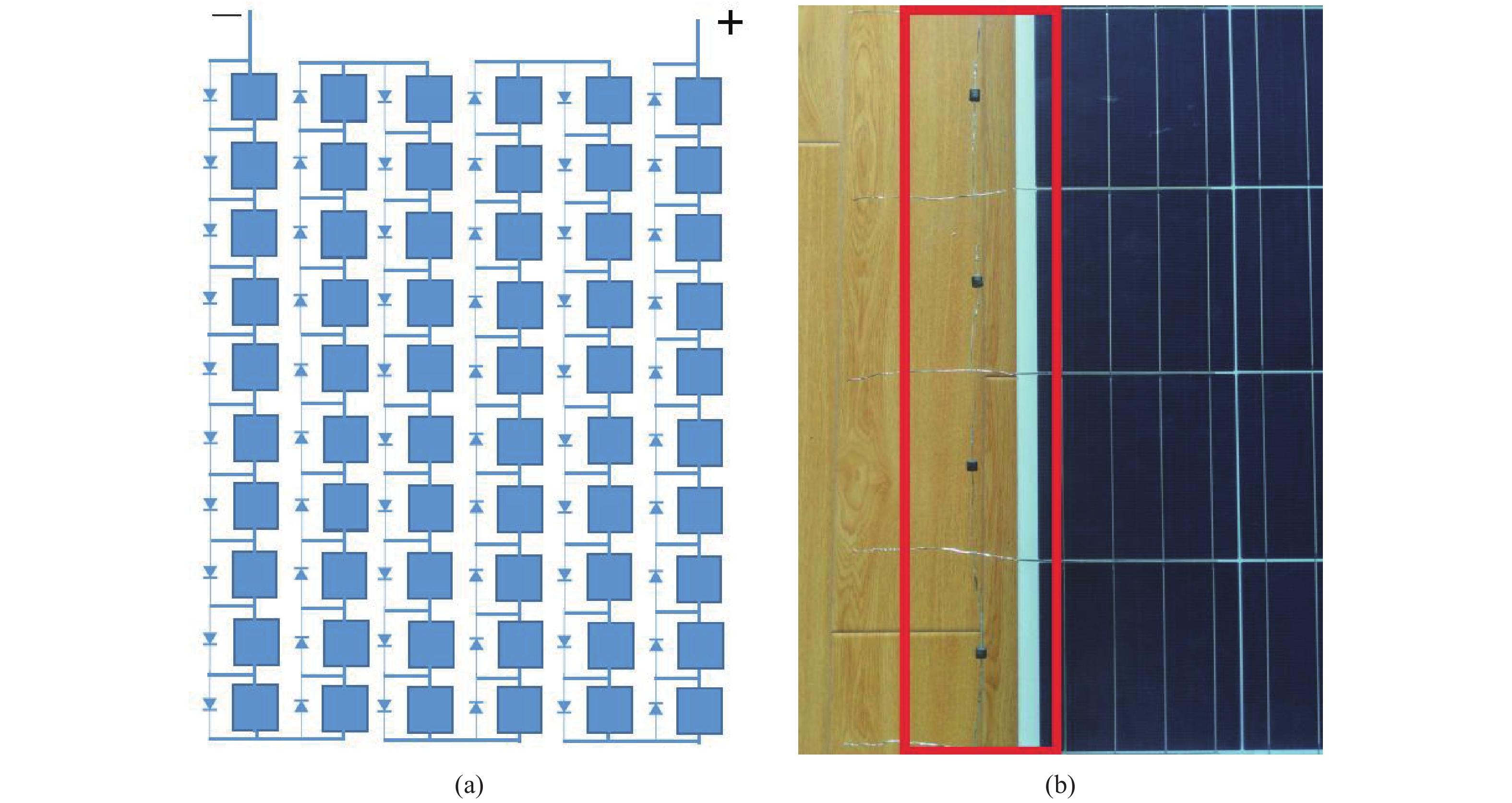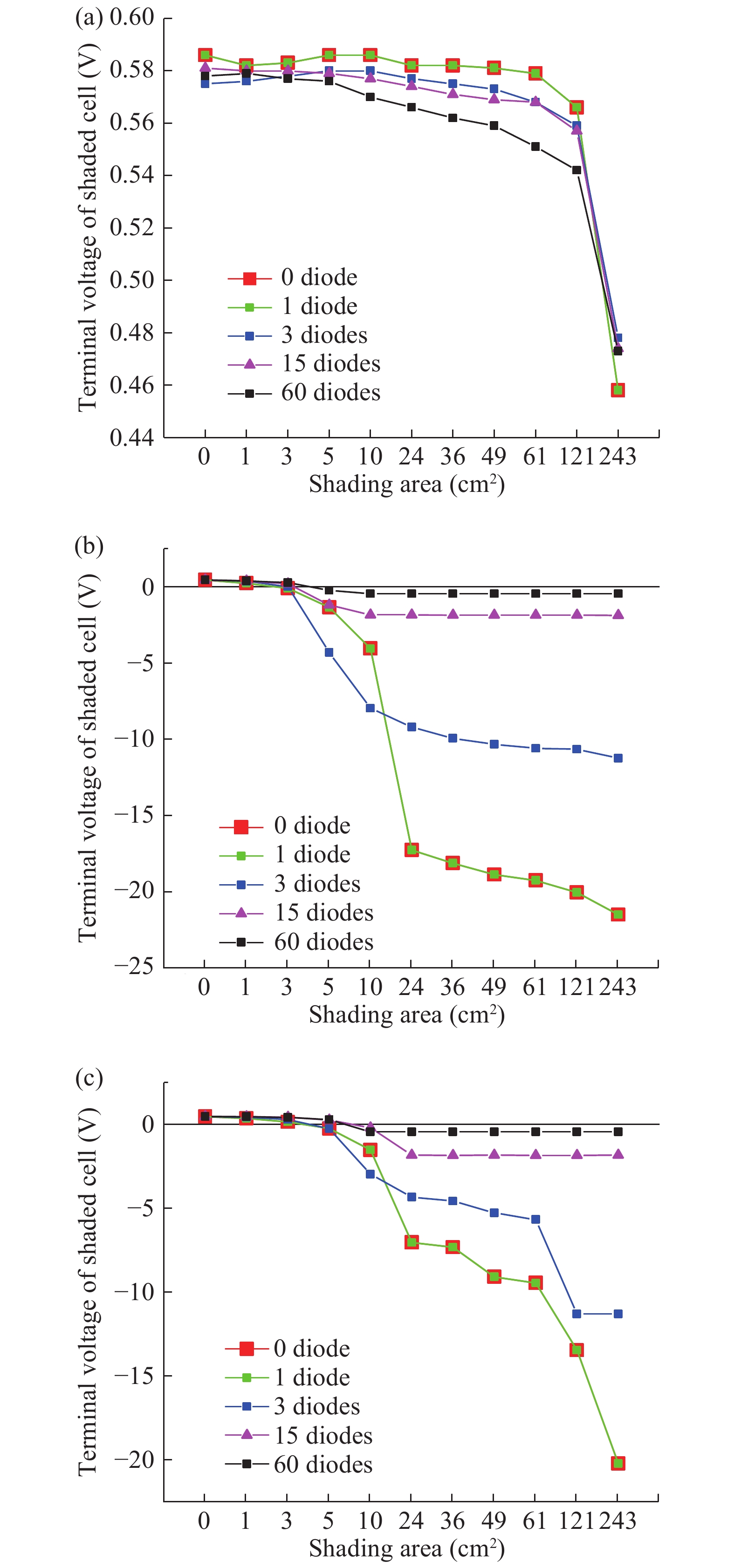| Citation: |
Cong Gao, Peng Liang, Huixue Ren, Peide Han. Experimental research on the relationship between bypass diode configuration of photovoltaic module and hot spot generation[J]. Journal of Semiconductors, 2018, 39(12): 124014. doi: 10.1088/1674-4926/39/12/124014
****
C Gao, P Liang, H X Ren, P D Han, Experimental research on the relationship between bypass diode configuration of photovoltaic module and hot spot generation[J]. J. Semicond., 2018, 39(12): 124014. doi: 10.1088/1674-4926/39/12/124014.
|
Experimental research on the relationship between bypass diode configuration of photovoltaic module and hot spot generation
DOI: 10.1088/1674-4926/39/12/124014
More Information
-
Abstract
A hot spot is a reliability problem in photovoltaic (PV) modules where a mismatched or shaded cell heats up significantly and degrades the PV module output power performance. High PV cell temperature due to a hot spot can damage the cell encapsulate and lead to second breakdown, which both cause permanent damage to the PV module. In present systems, bypass diodes are used to mitigate the hot spot problem. In this work, five commercial polysilicon PV modules configured with different numbers of bypass diodes are used to study the influence of bypass diodes on the reverse bias voltage of a shaded cell and the resulting hot spot phenomenon. The reverse bias voltage of the shaded cell, and the hot spot probability and severity decrease as the number of bypass diodes increases. Negative terminal voltage of a shaded cell accompanied by a switched-off bypass diode are the necessary condition for hot spot generation. In an extreme case where each cell has an individual bypass diode in a PV module, it still cannot avoid the hazards of a hot spot under the shading areas of 5–7 cm2, but the probability of a hot spot is reduced to a minimum of 0.41%. -
References
[1] Blake F A, Hanson K L. The hot-spot failure mode for solar arrays. Proceedings of the 4th Intersociety Energy Conversion Engineering Conference, 1969: 575[2] Dhimish M, Holmes V, Mehrdadi B, et al. Seven indicators variations for multiple PV array configurations under partial shading and faulty PV conditions. Renew Energy, 2017, 113: 438 doi: 10.1016/j.renene.2017.06.014[3] Orduz R, Solorzano J, Roman E, et al. Analytical study and evaluation results of power optimizers for distributed power conditioning in photovoltaic arrays. Prog Photovolt, 2013, 21(3): 359 doi: 10.1002/pip.v21.3[4] Xu Y F, Li M, Wang L L, et al. Performance analysis of solar cell arrays in concentrating light intensity. J Semicond, 2009, 30(8): 084011 doi: 10.1088/1674-4926/30/8/084011[5] Papula P, Stowell C. Solar array " hot-spot” testing and analysis. J Spacecraft Rockets, 1986, 23(4): 401 doi: 10.2514/3.25820[6] Perez M D, Gorji N E. Modeling of temperature profile, thermal runaway and hot spot in thin film solar cells. Materi Sci Semicond Process, 2016, 41(1): 529[7] Deng S F, Zhang Z, Ju C H, et al. Research on hot spot risk for high-efficiency solar module. Energy Procedia, 2017, 130: 77 doi: 10.1016/j.egypro.2017.09.399[8] Dhimish M, Holmes V, Mather P, et al. Novel hot spot mitigation technique to enhance photovoltaic solar panels output power performance. Sol Energy Mater Solar Cells, 2018, 179: 72 doi: 10.1016/j.solmat.2018.02.019[9] Simo A, Martinuzzi S, David J, et al. Local investigation of hot spot areas on multicrystalline silicon solar cells. Solar Cells, 1990, 28(4): 327 doi: 10.1016/0379-6787(90)90068-G[10] Geisemeyer I, Fertig F, Warta W, et al. Prediction of silicon PV module temperature for hot spots and worst case partial shading situations using spatially resolved lock-in thermography. Sol Energy Mater Solar Cells, 2014, 120: 259 doi: 10.1016/j.solmat.2013.09.016[11] Stemi R, Choulis S A, Schilinsky P, et al. Formation and impact of hot spots on the performance of organic photovoltaic cells. Appl Phys Lett, 2009, 94(4): 043304 doi: 10.1063/1.3073857[12] Wasmer S, Rajsrima N, Geisemeyer I, et al. Analytical modeling of the temporal evolution of hot spot temperatures in silicon solar cells. J Appl Phys, 2018, 123(9): 093105 doi: 10.1063/1.5018171[13] He W, Liu F S, Jie J, et al. Safety analysis of solar module under partial shading. Int J Photoenergy, 2015: 907282[14] Zhang Y B, Xia D F, Quan P, et al. The study on hot spots failure of polycrystalline wafer based photovoltaic modules. Acta Energiae Solaris Sinica, 2017, 38(7): 1854[15] Katherine A K, Philip T. Photovoltaic hot spot analysis for cells with various reverse-bias characteristics through electrical and thermal simulation. 2013 IEEE 14th Workshop on Control and Modeling for Power Electronics, COMPEL 2013. 2013: 6626399[16] Lim J R, Min Y, Jung T H, et al. Correlation between reverse voltage characteristics and bypass diode operation with different shading conditions for c-Si photovoltaic module package. J Semicond Technol Sci, 2015, 15(5): 577 doi: 10.5573/JSTS.2015.15.5.577[17] Yoshioka H, Nishikawa S, Nakajima S, et al. Non hot-spot PV module using solar cells with bypass diode function. Conference Record of the IEEE Photovoltaic Specialists Conference. 1996: 1271[18] Kim K A, Seo G, Cho B, et al. Photovoltaic hot-spot detection for solar panel substrings using AC parameter characterization. IEEE Trans Power Electron, 2016, 31(2): 1121 doi: 10.1109/TPEL.2015.2417548[19] Alrawi N A, Alkaisi M M, Asfer D J. Reliability of photovoltaic modules II. Interconnection and bypass diodes effects. Sol Energy Mater Solar Cells, 1994, 31(4): 469 doi: 10.1016/0927-0248(94)90189-9[20] Li S S, Zhang X, Xie D, et al. Research on optimal configurations of bypass diodes in PV module under shading conditions. Acta Energlae Solaris Sinica, 2013, 34(10): 1768[21] Bao D W, Gu Z Y, Zhang J B, et al. A solar cell module with internal independent bypass diodes. Proceedings of Ises Solar World Congress 2007: Solar Energy and Human Settlement, Vols I-V. 2007: 1514[22] Dhimish M, Holmes V, Mehrdadi B, et al. PV output power enhancement using two mitigation techniques for hot spots and partially shaded solar cells. Electr Power Syst Res, 2018, 158: 15 doi: 10.1016/j.jpgr.2018.01.002[23] Eltawil M, Zhao Z M. MPPT techniques for photovoltaic applications. Renew Sustain Energy Rev, 2013, 25(5): 793[24] Arabatzis I, Todorova N, Fasaki I, et al. Photocatalytic, self-cleaning, antireflective coating for photovoltaic panels: Characterization and monitoring in real conditions. Solar Energy, 2018, 159: 25 -
Proportional views






 DownLoad:
DownLoad:

















